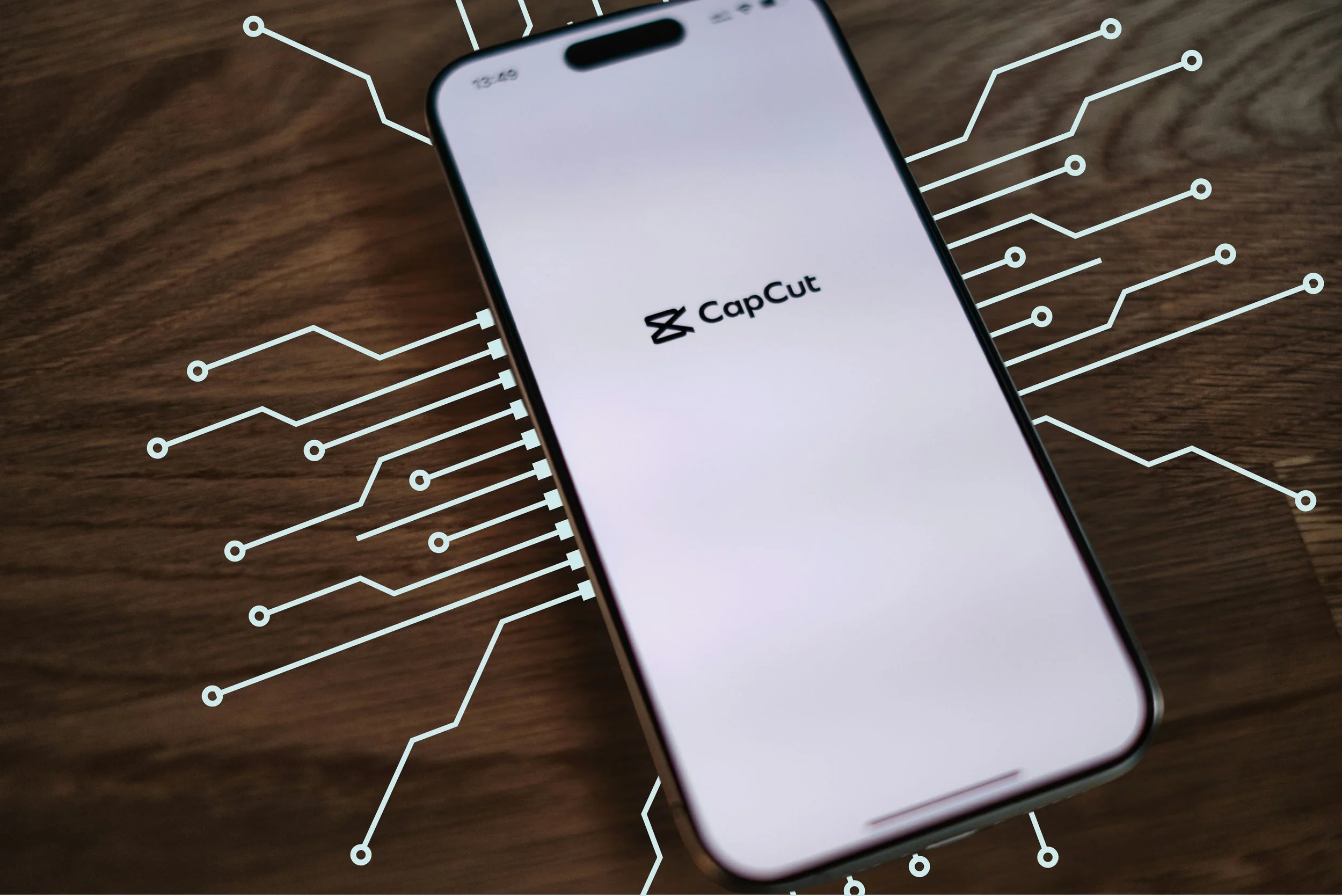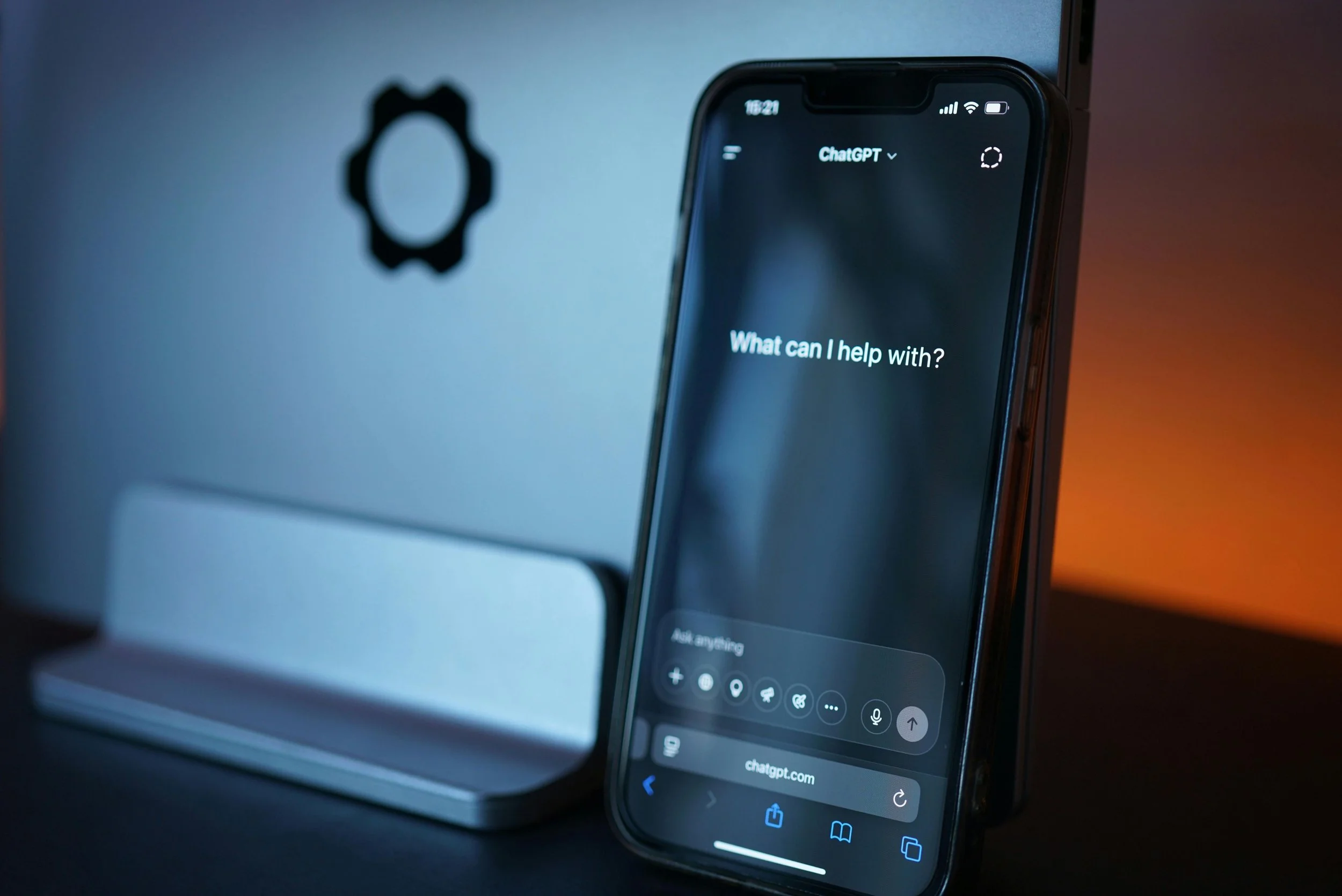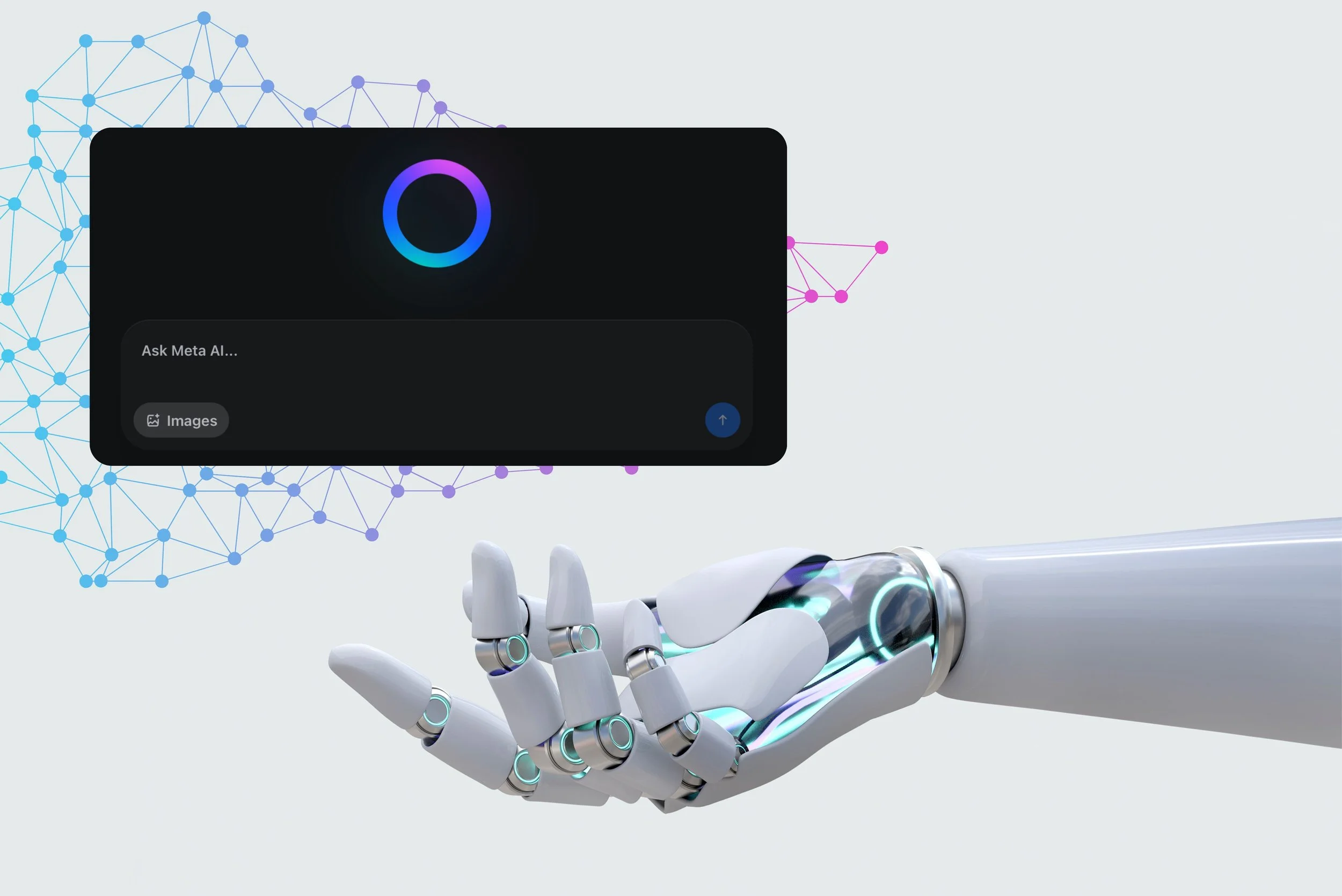How We’re Using AI at Work in 2025 (Without Selling Our Souls)
No matter where you look, it seems like it’s all about AI these days. And nowhere is this more apparent than in the professional world, where companies are constantly looking for ways to leverage technology.
Depending on who you ask, businesses turn to AI to either speed up workflows and enhance human creativity, or to lay off 100% of their workforce and completely submit to our computer overlords. While we’ve explored the good, the bad, and the ugly sides of AI in the past, we’re also not Luddites about it. In a world where everyone is harnessing ultra-powerful technology to get ahead, it just makes sense to jump on the bandwagon. But from the beginning of our journey with AI, we always knew we wanted to use it in a way that made sense. Not just for our bottom line, but for our spirits, souls, and sense of self in an ever-busier, increasingly automated professional landscape.
So, without further ado, we want to share a few of the AI tools we’re using in our social media manager toolkit in 2025, explaining how we use them, why we use them, and what it looks like to combine irreplaceable human creativity with this powerful technology.
1. Veo 3
Veo 3 is an AI-powered video generation tool that allows you to make high-quality, short-form videos with as little as a single-sentence prompt. Veo 3 is powered by Gemini AI (Google’s AI platform), which means it has already emerged as a highly competent tool compared to similar products created by (relatively) smaller companies.
Veo 3 has a bunch of selling points, such as realistic physics for light, water, shadows, and the way objects move. It also produces video in very high quality, reducing a lot of the telltale AI jitters, smearing, and pixelization that have plagued other generative video platforms. But most importantly, Veo 3 stands apart from the competition thanks to its native audio generation. Whereas most video-generating tools only create video, forcing you to figure out your own audio after the fact, Veo 3 creates synchronized, realistic audio that automatically lines up with whatever’s happening on the screen, making the results much more flexible and versatile.
While we’re still experimenting with this tool, it’s already proven useful as a quick way to make short (maximum 8 seconds, for now), eye-catching clips for social media. For content that’s more about the captions, for instance, this is a huge asset, reducing the time we need to spend manipulating stock footage and other clips to make a similar clip.
2. Capcut
We’ve been loving Capcut since way before they added AI, and it just keeps getting better! This video editing app, owned by ByteDance (who also owns TikTok), first made waves thanks to its ease of use, even on a phone, making video content creation way more accessible to an entire generation.
But if we thought Capcut was simple to use before, AI has totally changed the game. Now, you can have an AI edit the entire video for you, or even create it from scratch. There are a few features on offer here, some of which work great with our workflow, and some of which are a little too out there for us at the moment. One super handy feature is AI templates, which allow you to input a script and a few clips, and then simply click a button and watch your video be created before your eyes. This makes it simple to make educational videos, product promos, or anything else you can dream of.
Capcut is also experimenting with AI avatars, which isn’t something we’ve worked with much yet, but holds interesting potential for the future. Currently, the app offers around 100 AI-generated ‘people’ who can act as narrators or presenters for your video, complete with voiceover. You can even upload clips of yourself and make an AI clone of yourself to do the same thing. At the moment, these are still sitting on the wrong side of the uncanny valley for us, but it’s a feature to keep an eye on nevertheless.
3. Midjourney
Midjourney Labs Inc., a small, independent research lab based in San Francisco, offers an outstanding image generation program that we regularly use in our work. This is similar to other offerings like DALL-E and Stable Diffusion, but has emerged as one of the top options thanks to its higher image quality, simple prompting process, and huge flexibility for art styles and themes.
Like all AI platforms, Midjourney isn’t perfect. Sometimes it takes some coaxing to get the visual you were after, sometimes it struggles with specific details, and sometimes, it’s just easier to put one of our talented graphic designers on the case. But when it comes to simpler images that we need to get a message across, Midjourney is a super reliable tool that every SMM should have in their arsenal.
4. ChatGPT
Of all the AI tools out there, few are quite as famous and controversial as OpenAI’s ChatGPT. This large language model AI, who we have named Fred for ease and efficiency, functions like an omniscient chatbot, using its probability-based token system to help distill internet research into a single place, outline documents, rewrite content, and generate all-new writing.
There’s a fine line when it comes to something like ChatGPT. After all, what kind of creative agency would we be if we outsourced every creative task to computers? With this in mind, we think of ChatGPT as a step in the process, rather than the be-all-end-all of content writing. And a lot of our written work (including every article on the BNL blog) is created start-to-finish by a human being without the help of AI. But if we need to tweak a piece of newsletter content or caption copy to feel more like our client’s exact tone of voice, for instance, ChatGPT is a great way to get out of our built-in writing habits and look at things from a new perspective.
5. DashThis AI Insights
A big part of our job is creating reports and presenting them to our clients each month. These reports show what we’ve accomplished, indicating progress towards our goals and the overall growth of different social media accounts. In years past, creating these reports was a massive task that took dozens of hours a month to complete.
Now, we’ve streamlined this often tedious process with the help of AI Insights in our reporting platform, DashThis. While this feature is still only in Beta at the time of writing, it’s already proven to be an asset in the reporting process. The AI combs through all the raw data we collect about our clients’ accounts. It analyzes this data in seconds, including marketing performance, engagement metrics, views, and everything else, and then presents us with a simple report highlighting our wins, areas for improvement, and opportunities for growth.
We still value the power of real, human analysis on these reports. Oftentimes, we have unique insights on trends and online culture that AI is lacking, and we always compile the final reports ourselves before passing them to our clients. But when it comes to distilling raw data into useful insights and actionable strategies, this humble AI feature has been a huge help at BNL.
6. Meta AI tools
Meta (owner of Facebook, Instagram, WhatsApp, and so forth) is a newer arrival in the AI space, but it’s already made its mark in the form of Meta AI. You might know Meta AI as the annoying thing that your Instagram search bar turned into, but it also has some other amazing features for anyone in the social media marketing game.
When building an organic social media strategy, understanding your audience is key. You need to know what topics spark conversations, which trends are resonating, and how your content performs across different formats. Meta AI can support this process by offering AI-powered insights into audience behaviour and engagement trends. By analyzing what types of content are performing well and surfacing patterns in audience interests, Meta AI can help you refine your approach—without relying on paid ads.
Meta AI also includes the Imagine feature, which can help creators quickly generate content ideas or visuals for posts and stories, saving hours of brainstorming and design time. When used correctly, the various features of Meta AI can dramatically increase ad campaign conversion while cutting costs at the same time.
A Note on Trusting AI
When you incorporate AI into your workflow, it’s important to remember that this tool isn’t in a position to replace us. At least, not yet. Glitches, digital ‘hallucinations’, and other slip-ups are still common with this technology, so human oversight is a must to ensure AI-generated work meets your personal standards.
Read your copy before you post it. Watch your videos all the way through. Check generated audio. Nothing screams complacent and lazy like AI errors making it into the finished product, and that’s exactly what we work to avoid when we use this tool in our day-to-day.
Working AI Into Your Work
There’s no shortage of opinions out there on AI. And whether you’re fiercely rejecting the idea of letting computers take on aspects of your business or actively looking for more ways to automate, the fact is that we’ll all have to find ways to make AI work for us. Even if you personally don’t use it, you’ll be interacting with more and more as time goes on, both in everyday life and in the professional world.
If you’re also in the marketing world, you’ve seen how dramatic the shifts have been already. The legacy industry of search engine optimization has just been turned on its head by Google’s AI overview feature. AI images and videos are getting good enough to pass for the real thing, leading to huge changes in the way marketing firms create content for their clients. ChatGPT has become so ubiquitous that the once-illustrious em-dash now feels like typing a bad word.
These changes are unpredictable, confusing, and sometimes existentially terrifying. And while we don’t believe in putting human creativity and thought on the back burner in favour of soulless machines, we also recognize that putting this powerful technology to work just makes sense. Hopefully, these tools can be a starting point for your business, showing a way to incorporate cutting-edge technology into your existing workflows in a way that empowers you, rather than replaces you.
If you have questions about these tools, how we use them, or how you can incorporate them in a sustainable way for your social media marketing, we’d love to chat! Don’t hesitate to reach out to us for more info.








